Nature never ceases to amaze us with its boundless creativity. From the lush rainforests to the deep, mysterious oceans, and even the eerie, desolate deserts, the planet is teeming with life forms that defy our understanding. Some animals are so bizarre, with such unique adaptations, that they make us wonder if Mother Nature might have taken a day off when designing them. Here’s a delightful dive into the world of weird wildlife that will leave you scratching your head and perhaps even appreciating the diversity of life a little more.
1. The Platypus: Nature’s Jigsaw Puzzle
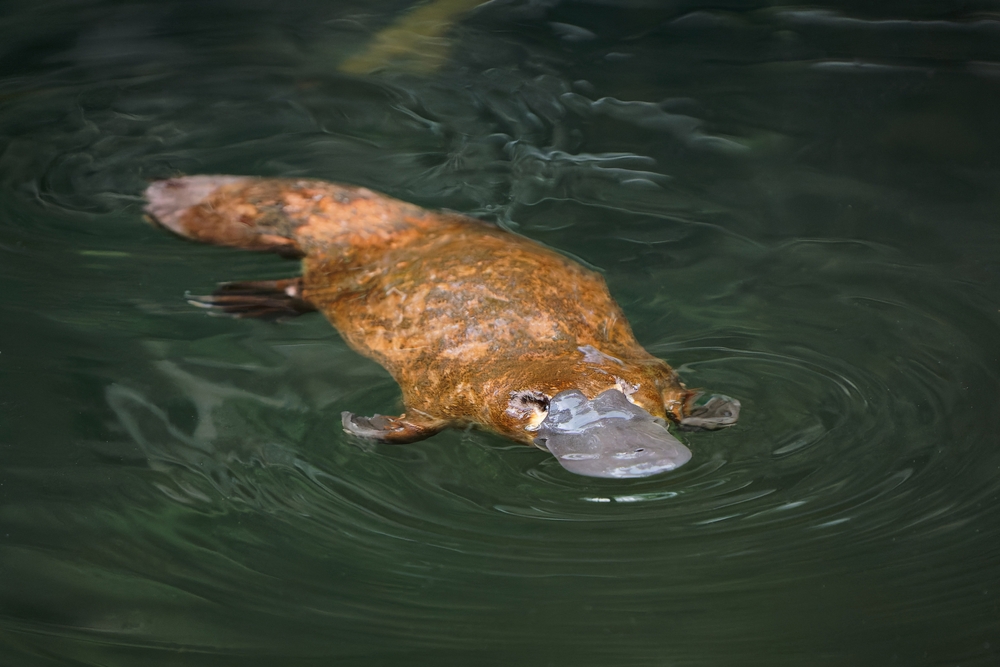
The platypus is one of those animals that seems like it was assembled from leftover parts in nature’s workshop. It’s got the bill of a duck, the tail of a beaver, and the feet of an otter, creating a creature that truly stands out. What’s even more interesting is that the platypus is one of the few mammals that lays eggs, a trait more common in reptiles and birds. According to National Geographic, the platypus also has the ability to detect electric fields produced by other animals, making it a skilled hunter in murky waters. They use this electroreception to locate prey, such as shrimp and insects, in the rivers of Australia where they reside.
Moreover, male platypuses are equipped with venomous spurs on their hind legs, a feature that is rare among mammals. Although not deadly to humans, it can cause significant pain, demonstrating another peculiar trait of this already unusual animal. Their quirky characteristics have made them a subject of fascination and study among scientists. The platypus truly embodies the creativity of evolution, showcasing an amalgamation of features that span across the animal kingdom. It’s as if Mother Nature decided to have a little fun and play mix-and-match with this creature’s design.
2. The Axolotl: The Salamander That Never Grows Up
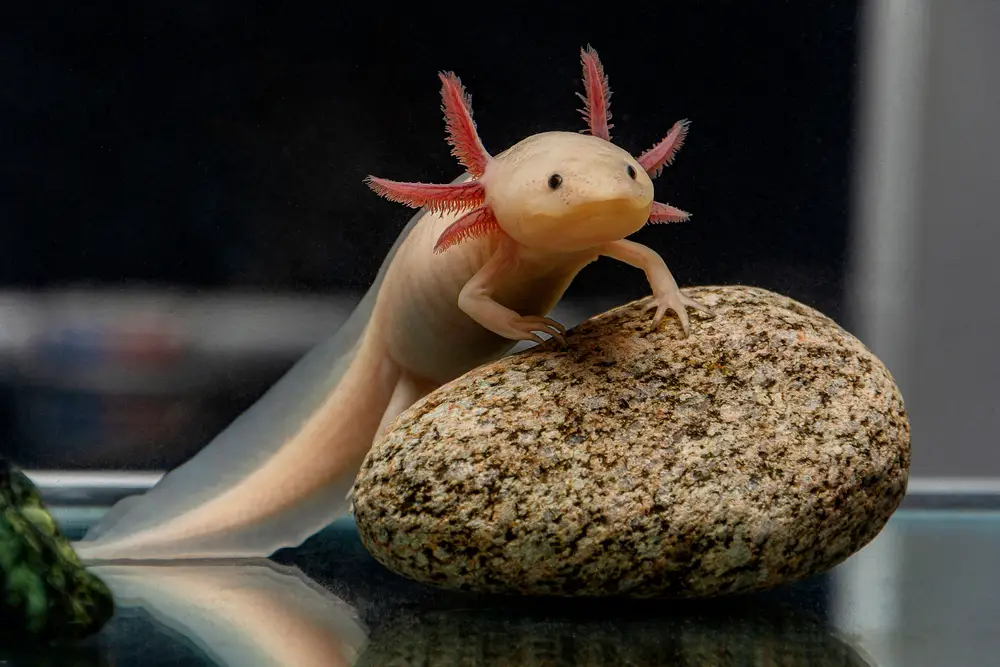
Imagine a creature that retains its youthful features throughout its life. Meet the axolotl, a type of salamander that never fully transitions from its larval stage to adulthood—a phenomenon known as neoteny. This means they keep their external gills and remain aquatic their entire lives. Interestingly, they are capable of regenerating not just limbs, but also spinal cords, hearts, and even parts of their brains. This incredible regenerative ability has captured the interest of scientists worldwide, who are studying the axolotl for insights into regenerative medicine.
One might say they’re the Peter Pan of the animal world, refusing to grow up. Axolotls are native to the lakes of Xochimilco near Mexico City, though their habitat has dwindled due to pollution and urbanization. Their adorable appearance, with a perpetual “smile” and feathery gills, has made them a popular pet, although they require specific care to thrive. With their remarkable traits, the axolotl poses fascinating questions about evolution and the possibilities of regeneration.
3. The Narwhal: The Unicorn of the Sea
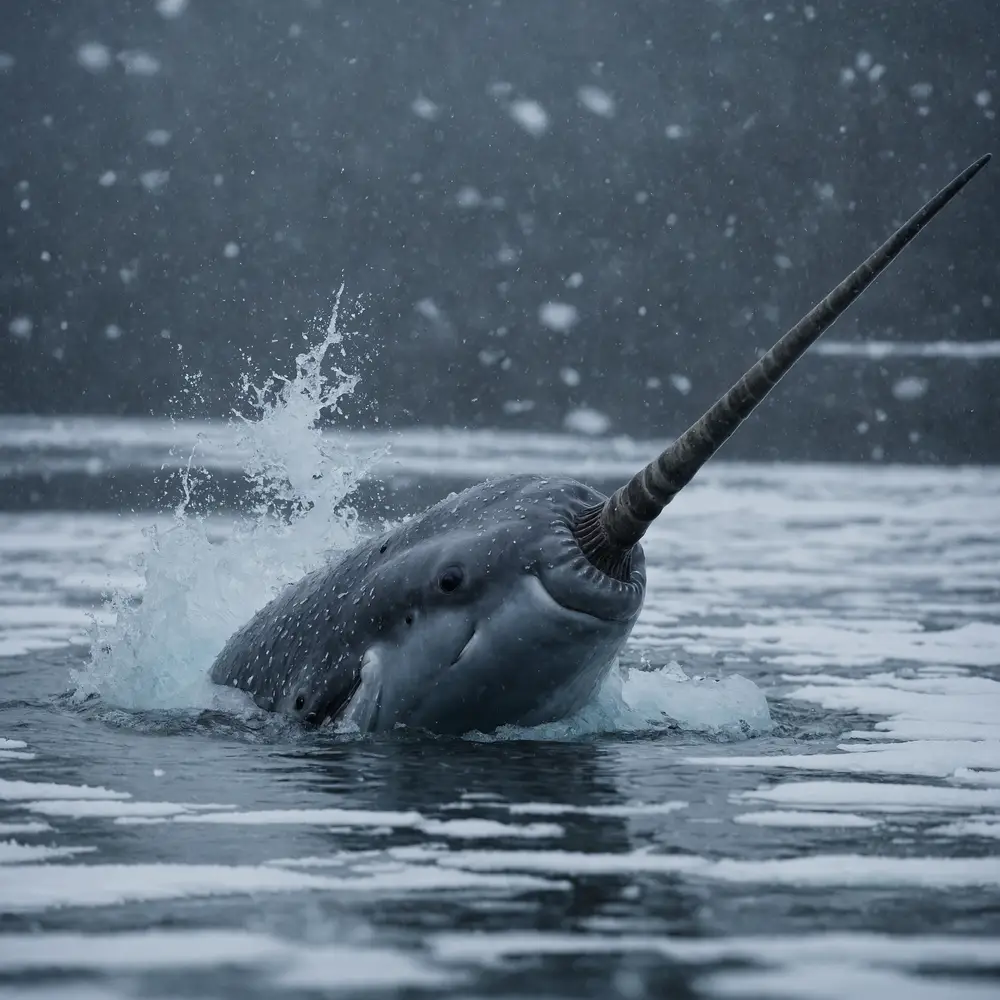
The narwhal might just be the most magical creature of the sea, often referred to as the “unicorn of the ocean”. Its most striking feature is the long, spiral tusk that can grow up to 10 feet, emerging from the heads of the males. This tusk is actually an elongated tooth, and although its full purpose is still being studied, it’s thought to be used in mating rituals or to navigate icy waters. According to the World Wildlife Fund, narwhals are a key indicator of the health of the Arctic ecosystem.
Narwhals inhabit the Arctic waters of Canada, Greenland, Norway, and Russia, and are well-adapted to life in the frigid ocean. Living in such extreme conditions has led to several unique adaptations, including the ability to dive almost a mile deep and stay underwater for up to 25 minutes. Their mysterious and elusive nature, coupled with their fascinating tusks, has made them a subject of legends and intrigue. While they may have inspired tales of unicorns, narwhals are very much real, continuing to enchant those lucky enough to encounter them.
4. The Star-Nosed Mole: Nature’s Tiny Tentacle Monster
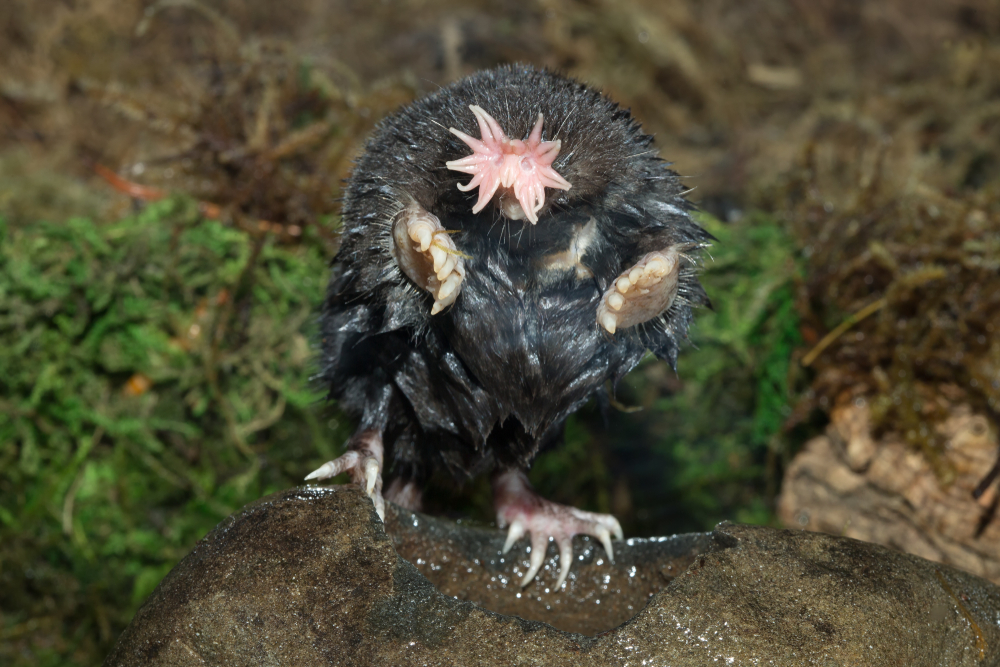
Beneath the surface of the earth, the star-nosed mole carries on its daily routine with a unique and slightly eerie feature. Instead of a typical snout, this mole sports a star-shaped ring of 22 fleshy tentacles around its nose, making it one of the most peculiar-looking creatures on the planet. These tentacles are not just for show; they are incredibly sensitive and can detect the smallest vibrations in the soil. This adaptation is essential for the mole’s survival as it allows them to hunt for tiny invertebrates with astounding speed.
The star-nosed mole is an expert in navigating its underground world, with its tentacles helping it to “see” in the dark. Despite its odd appearance, this mole is a marvel of natural engineering, with its nose being the fastest touch organ in the animal kingdom. The tentacles are capable of processing multiple objects per second, enabling the mole to make split-second decisions about what to eat. For such a small animal, the star-nosed mole packs a punch in sensory capabilities, proving that looks can be deceiving when it comes to nature’s designs.
5. The Leafy Sea Dragon: A Master of Disguise
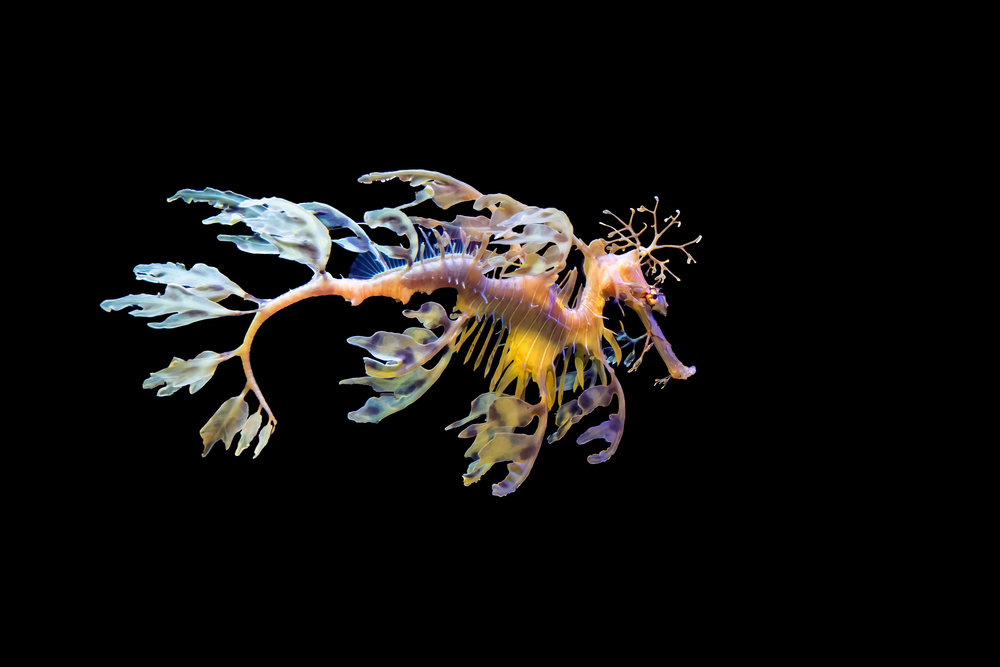
Looking like a creature plucked straight out of a fantasy novel, the leafy sea dragon is a testament to the wonder of camouflage. Found along the southern and western coasts of Australia, they are masters at blending into their seaweed-filled habitat. Their bodies are adorned with leaf-like appendages, allowing them to drift and sway with the ocean currents seamlessly. This impressive camouflage provides them with a defense mechanism against predators and aids in their hunt for small crustaceans and plankton.
While it may be difficult to spot one in the wild, the leafy sea dragon’s vibrant colors and intricate body structure make it a favorite among marine biologists and divers. Unlike its seahorse relatives, the leafy sea dragon does not have a prehensile tail, relying solely on its camouflage for protection. This vulnerability to environmental changes and human activities has led to conservation efforts to protect their natural habitats. The leafy sea dragon’s unique beauty and remarkable adaptations illustrate just how varied and imaginative life under the sea can be.
6. The Aye-Aye: Madagascar’s Nocturnal Super Sleuth
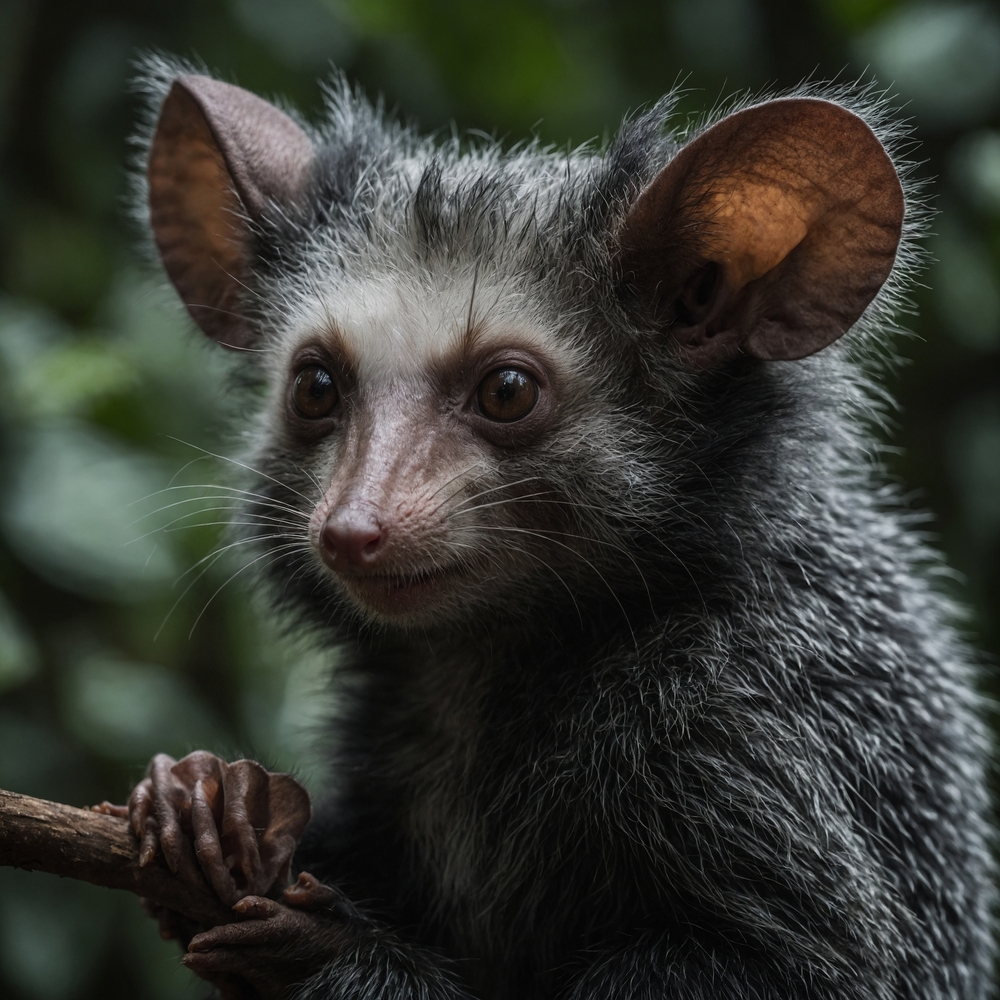
Hailing from the dense jungles of Madagascar, the aye-aye is one of the most unusual primates on Earth. With its large eyes, bushy tail, and a middle finger that seems to belong to a different animal entirely, it’s no wonder the aye-aye is often regarded with a mix of awe and curiosity. This elongated finger is the aye-aye’s secret weapon, used to tap on tree bark and locate grubs by sound. Once a snack is detected, the finger acts as a tool to extract the prey from its hiding spot.
Despite its eerie appearance, the aye-aye plays a critical role in its ecosystem, controlling insect populations and contributing to the dispersal of seeds. Unfortunately, due to superstitions and habitat destruction, aye-ayes face threats from humans who often regard them as omens of bad luck. Conservation efforts are underway to protect these intriguing creatures and their habitats. The aye-aye’s unique adaptations highlight the incredible diversity and specialization found among Madagascar’s wildlife, reminding us of the delicate balance within nature.
7. The Blobfish: The Ocean’s Unfortunate Celebrity
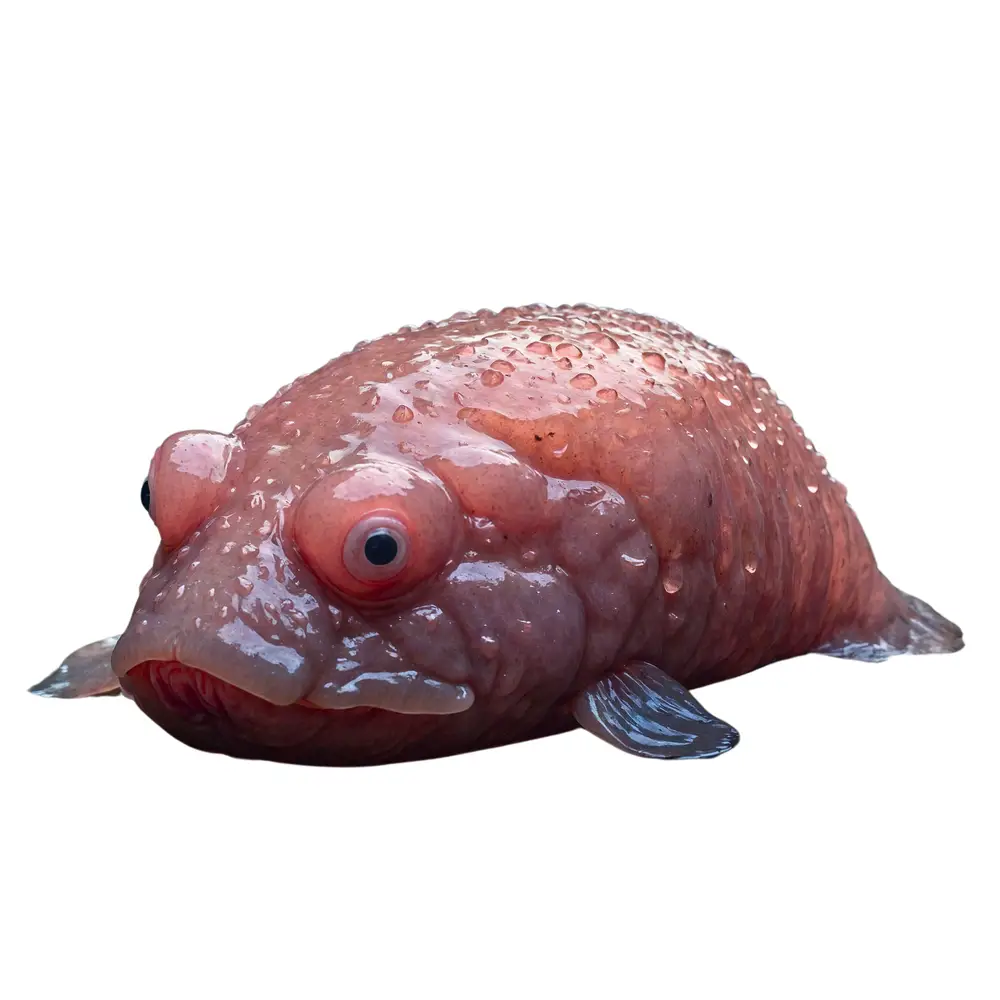
Meet the blobfish, an animal that has garnered fame for its less-than-photogenic appearance. Often voted as the world’s ugliest animal, the blobfish lives in the deep waters off the coasts of mainland Australia and Tasmania. Down in the abyss, its gelatinous body is perfectly adapted to withstand high-pressure environments, appearing much more normal when in its natural habitat. However, when brought to the surface, the lack of pressure causes the blobfish’s body to sag, creating the infamous “miserable” look that has captured public attention.
Despite its unfortunate surface appearance, the blobfish is a fascinating creature perfectly suited to its deep-sea life. It feeds on small invertebrates like shellfish and sea urchins, floating along with the ocean currents rather than actively hunting. The blobfish’s unique adaptations are a reminder of the incredible diversity of life that exists in the ocean’s depths, even if it’s not always conventionally beautiful. This unusual fish has become something of a mascot for conservation efforts, raising awareness about the less glamorous creatures that play vital roles in their ecosystems.
8. The Saiga Antelope: The Survivor of the Steppes
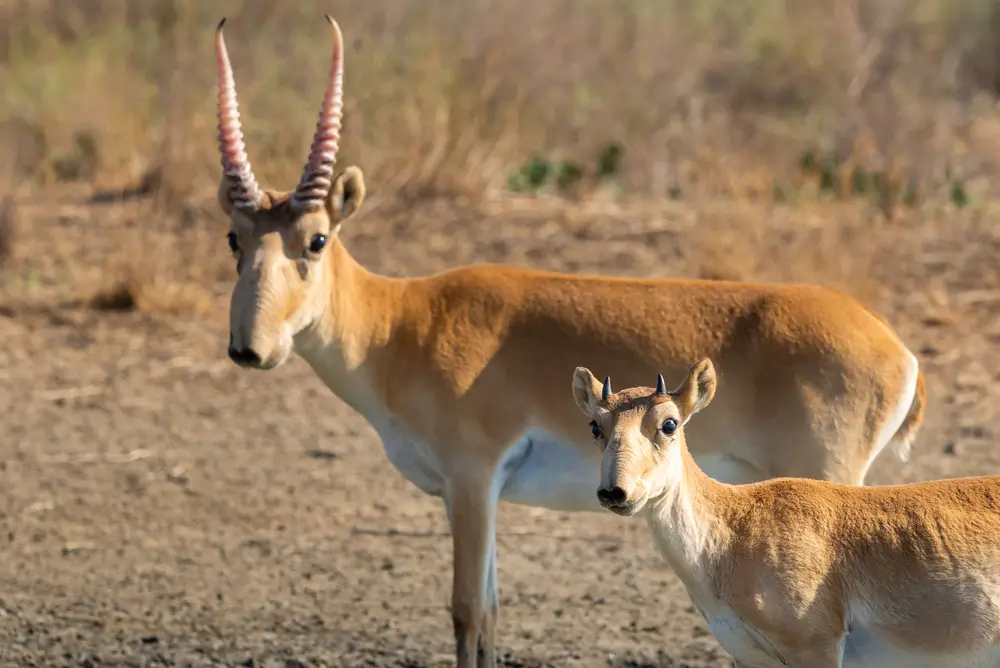
With its peculiar bulbous nose, the saiga antelope looks like it walked straight out of a Dr. Seuss book. This unique nose isn’t just for show; it’s an adaptation that filters out dust during the dry summer months and warms cold air during the harsh winters of the Central Asian steppes. Once a common sight across the plains of Eurasia, saiga antelopes have faced severe population declines due to hunting and disease outbreaks. Their numbers have dwindled, making them one of the most critically endangered animals today.
The saiga’s distinctive nose also plays a role during mating season, producing resonant calls that attract females and ward off rivals. These antelopes are known for their graceful movement across the steppes, capable of running long distances at impressive speeds, a must-have trait for escaping predators. In recent years, conservationists have made efforts to protect and restore saiga populations, focusing on habitat preservation and anti-poaching measures. Despite the challenges they face, the resilience of the saiga antelope is a testament to the adaptability and tenacity of nature’s creatures.
9. The Kakapo: The World’s Heaviest Parrot
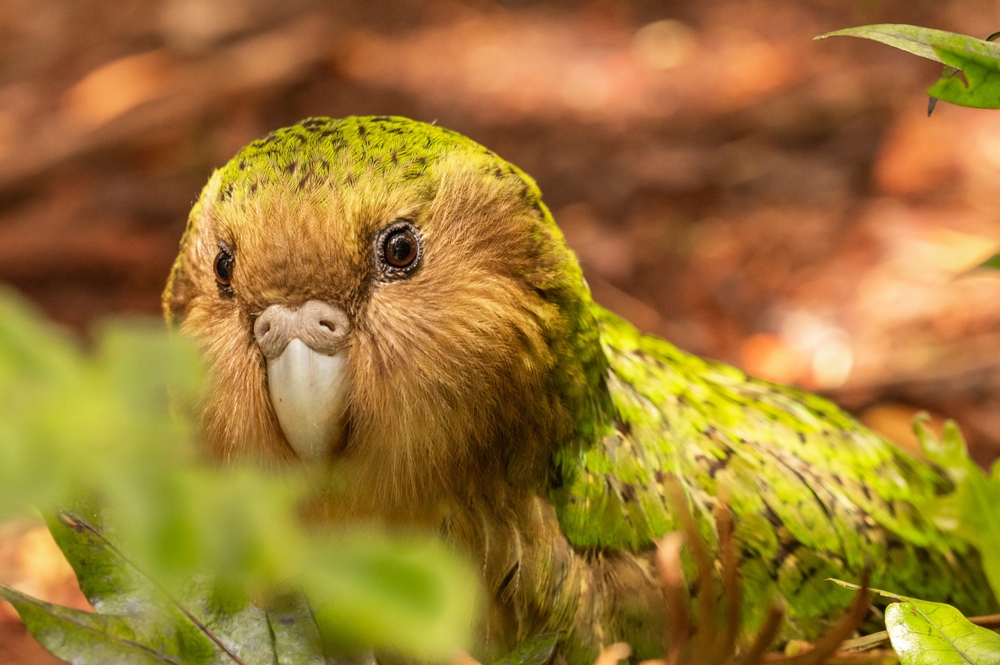
The kakapo, also known as the “owl parrot,” is a flightless bird hailing from New Zealand and holds the distinction of being the world’s heaviest parrot. Unlike its colorful, flighted counterparts, the kakapo is nocturnal and relies on its excellent sense of smell to navigate the forest floor. With a stocky build and moss-green plumage, it expertly blends into its environment, avoiding predators during the day. Despite its inability to fly, the kakapo is a skilled climber, using its wings for balance as it scales trees to forage for food.
Once abundant, kakapos have faced near-extinction due to habitat destruction and the introduction of predators like rats and stoats. Conservation efforts have been underway since the 1990s, with the establishment of predator-free islands to protect the remaining population. These efforts have seen some success, but the kakapo remains critically endangered, with each breeding season being crucial for the species’ survival. The kakapo’s story is one of hope and resilience, highlighting the importance of conservation in preserving the unique biodiversity of our planet.
10. The Olm: The Blind Cave Dweller
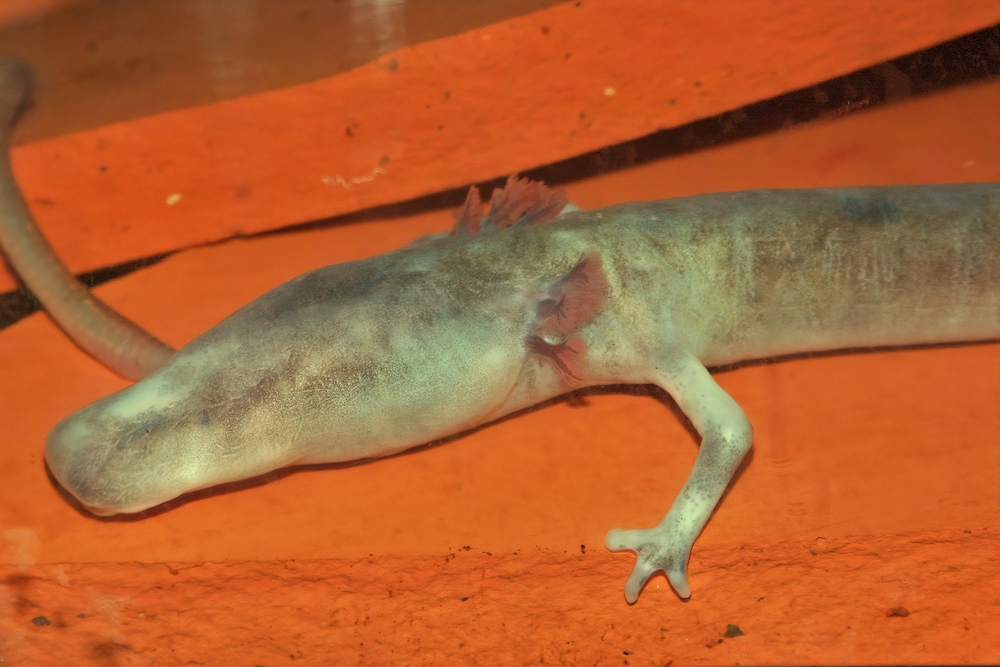
Dwelling in the dark, submerged caves of Europe, the olm is an aquatic salamander that has adapted to life without light. Its pale, almost translucent skin and lack of functional eyes make it appear ghostly, suited for its subterranean environment. Olms navigate using their heightened senses of smell and hearing, relying on the faintest vibrations to hunt for prey. This remarkable adaptation allows them to thrive in the pitch-black waters they call home.
What’s fascinating about olms is their extraordinary lifespan; they can live up to 100 years and can survive for a decade without food. This endurance is a testament to their evolutionary success in such a challenging habitat. They are also known for their regenerative abilities, much like their axolotl relatives, able to repair damaged body parts with ease. Despite their resilience, olms face threats from pollution and habitat disturbance, underscoring the importance of protecting their unique ecosystems.
11. The Tardigrade: The Indestructible Micro Marvel
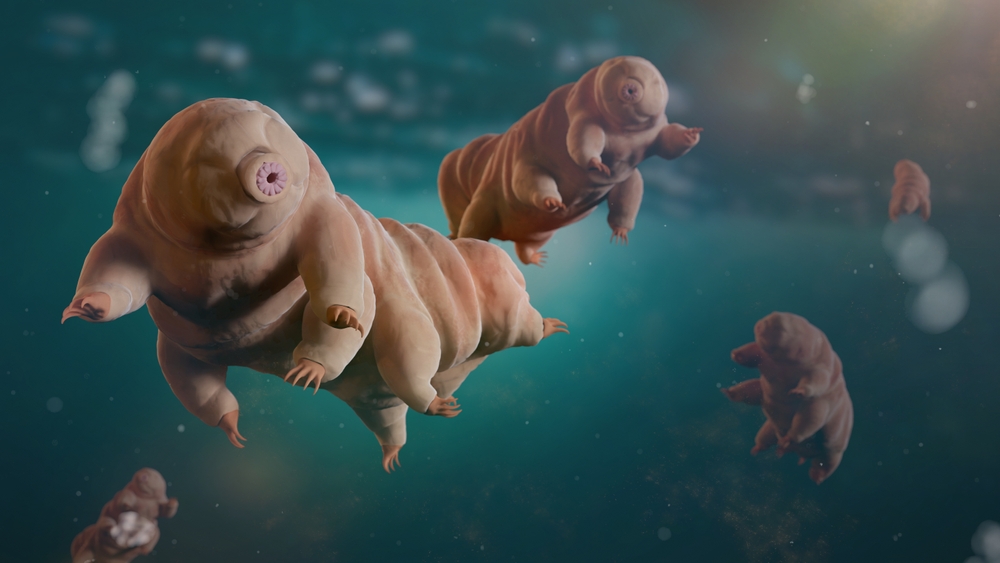
Few creatures can boast the resilience of the tardigrade, a microscopic animal known for its ability to survive the most extreme conditions on Earth—and beyond. Known colloquially as “water bears,” tardigrades can endure temperatures from near absolute zero to well above boiling, high levels of radiation, and even the vacuum of space. These incredible survival skills are due to their ability to enter a cryptobiotic state, essentially suspending their metabolism until conditions become favorable again.
Despite their tiny size, measuring just a fraction of a millimeter, tardigrades are found in a variety of habitats, from deep-sea trenches to mountain tops, showcasing their adaptability. Their robustness has made them a subject of fascination in scientific research, particularly in studies related to astrobiology and the potential for life beyond Earth. Tardigrades remind us that even the smallest creatures can hold the secrets to life’s resilience, challenging our understanding of biology and survival.
12. The Lyrebird: Nature’s Master Mimic
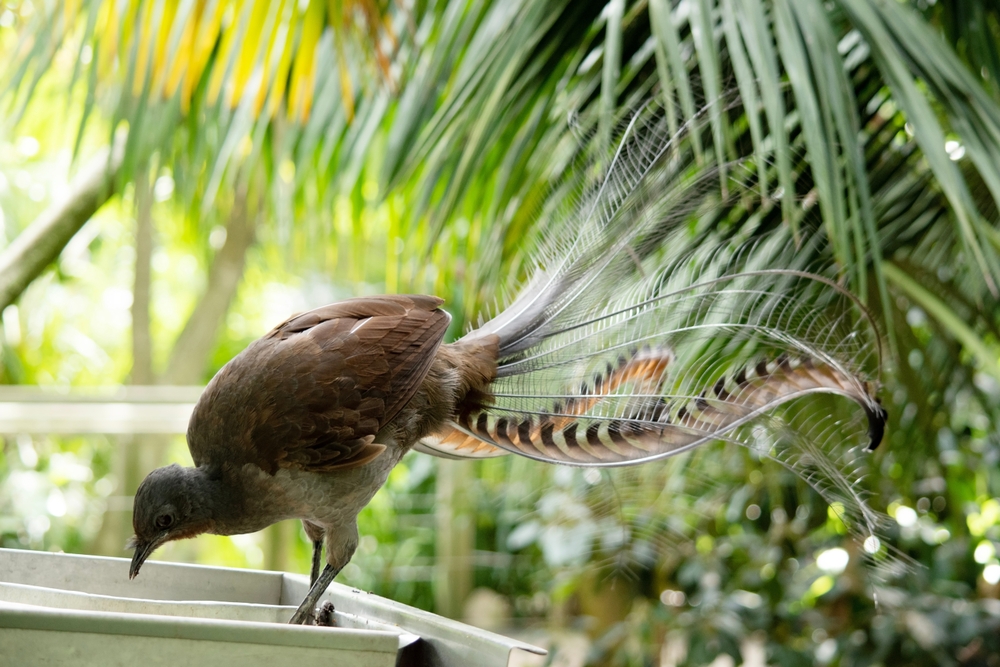
Native to Australia, the lyrebird is renowned for its extraordinary ability to mimic natural and artificial sounds with uncanny accuracy. Its impressive vocal repertoire includes the calls of other bird species, chainsaws, camera shutters, and even human noises. This remarkable mimicry is part of the male lyrebird’s courtship display, used to attract females by showcasing their vocal prowess. In addition to their vocal skills, lyrebirds have elaborate tail feathers that resemble a lyre when displayed during mating rituals.
Lyrebirds inhabit the forests of southeastern Australia, where their songs can be heard echoing through the trees. Their ability to replicate sounds from their environment is not just a party trick, but a sophisticated evolutionary advantage that helps them thrive in diverse habitats. Conservation efforts focus on preserving their forest habitats to ensure these captivating birds continue to enchant with their vocal talents. The lyrebird’s mimicry serves as a powerful reminder of the wonders of adaptation and the intricate connections between nature and its inhabitants.
13. The Immortal Jellyfish: Nature’s Time Traveler
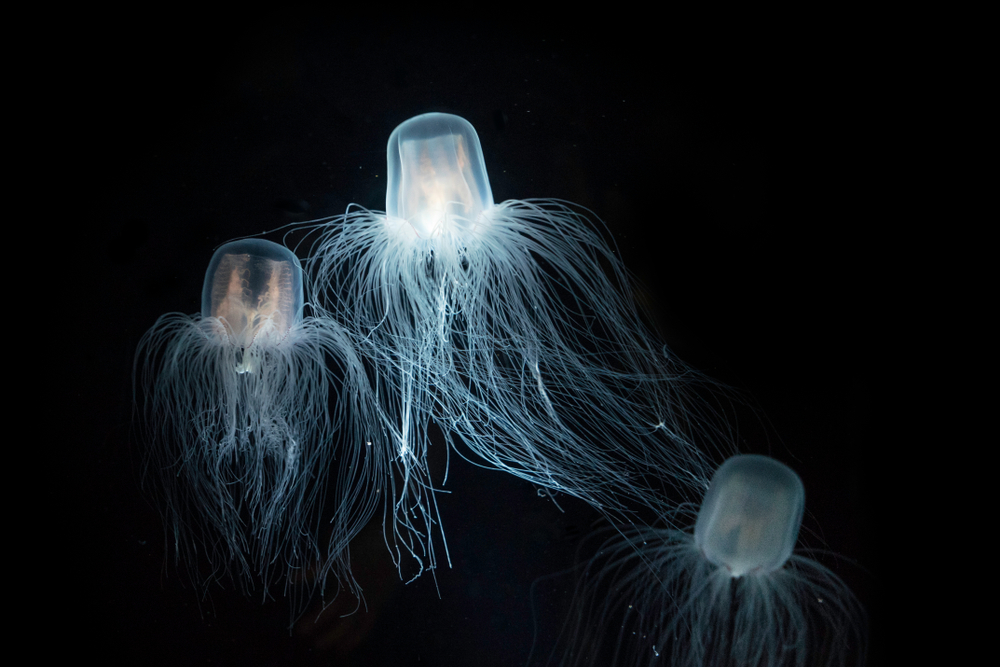
The immortal jellyfish, scientifically known as Turritopsis dohrnii, has captured the imagination of scientists and the public alike with its seemingly magical ability to revert to its juvenile form after reaching maturity. This process, known as transdifferentiation, effectively resets the jellyfish’s lifecycle, allowing it to bypass death and potentially live indefinitely under the right conditions. This fascinating adaptation provides a glimpse into the possibilities of biological immortality and regeneration.
Found in oceans around the world, the immortal jellyfish’s unique lifecycle has sparked interest in the field of aging research, as scientists explore its potential applications in human medicine. Despite its small size and unassuming appearance, this jellyfish holds the key to understanding the mechanisms of aging and cellular regeneration. However, like many marine creatures, it faces threats from ocean pollution and habitat destruction. The immortal jellyfish’s story is a testament to the incredible adaptability and innovation found in the natural world, challenging our perceptions of life and longevity.
